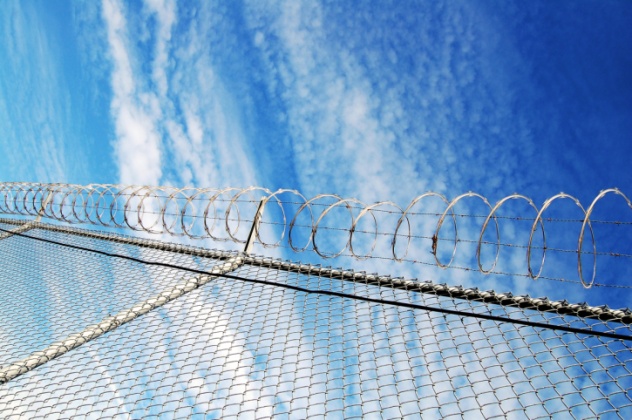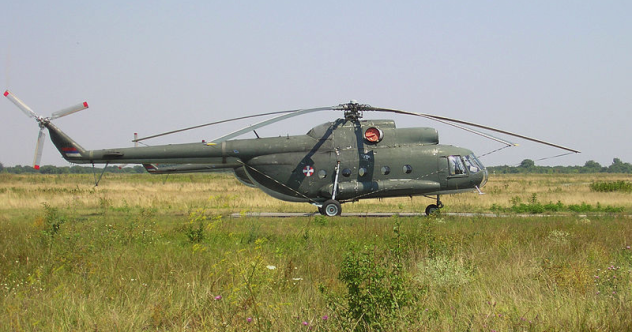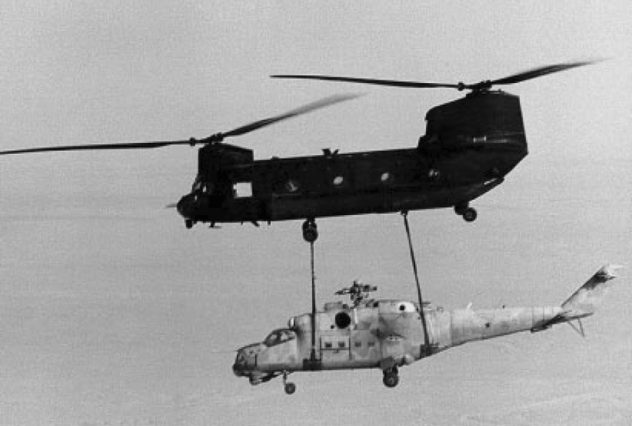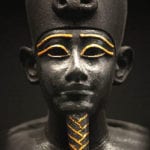 Travel
Travel  Travel
Travel  Movies and TV
Movies and TV 10 Actors Hidden in Your Favorite Movies
 Our World
Our World 10 Science Facts That Will Change How You Look at the World
 Pop Culture
Pop Culture 10 Incredible Female Comic Book Artists
 Crime
Crime 10 Terrifying Serial Killers from Centuries Ago
 Technology
Technology 10 Hilariously Over-Engineered Solutions to Simple Problems
 Miscellaneous
Miscellaneous 10 Ironic News Stories Straight out of an Alanis Morissette Song
 Politics
Politics 10 Lesser-Known Far-Right Groups of the 21st Century
 History
History Ten Revealing Facts about Daily Domestic Life in the Old West
 Weird Stuff
Weird Stuff 10 Everyday Products Surprisingly Made by Inmates
 Travel
Travel 10 Natural Rock Formations That Will Make You Do a Double Take
 Movies and TV
Movies and TV 10 Actors Hidden in Your Favorite Movies
 Our World
Our World 10 Science Facts That Will Change How You Look at the World
Who's Behind Listverse?

Jamie Frater
Head Editor
Jamie founded Listverse due to an insatiable desire to share fascinating, obscure, and bizarre facts. He has been a guest speaker on numerous national radio and television stations and is a five time published author.
More About Us Pop Culture
Pop Culture 10 Incredible Female Comic Book Artists
 Crime
Crime 10 Terrifying Serial Killers from Centuries Ago
 Technology
Technology 10 Hilariously Over-Engineered Solutions to Simple Problems
 Miscellaneous
Miscellaneous 10 Ironic News Stories Straight out of an Alanis Morissette Song
 Politics
Politics 10 Lesser-Known Far-Right Groups of the 21st Century
 History
History Ten Revealing Facts about Daily Domestic Life in the Old West
 Weird Stuff
Weird Stuff 10 Everyday Products Surprisingly Made by Inmates
10 Incredible Stories Involving Helicopters
Helicopters are used everywhere. Humanitarian efforts, military use, filmmaking, medical emergencies, news, science, photography, and tourism are among their countless uses. They’re often in the media, either for their participation in heroic rescue efforts or, more tragically, for crashing. Presented here for your reading pleasure are 10 stories involving adventurous use of helicopters—some inspiring, all daring.
10 Russian Pilot Fends Off Polar Bears After Crashing In The Arctic
Russian journalist and sociologist Sergey Ananov was attempting to circumnavigate the Arctic Circle in July 2015 when his Robinson R22 helicopter broke a gear midway through his trip. His aircraft crashed into frigid waters near Greenland, and Ananov was only able to grab his life raft and some flares before the helicopter disappeared beneath the ice. He ultimately managed to climb onto an ice floe.
During the 32 wet hours that he was stranded there, he fended off three curious polar bears, primarily by roaring and jumping out at them from beneath his raft to scare them off. Fog also dampened his hope of rescue. On the morning of the second day, after the fog had lifted, he heard the sound of a helicopter and was just barely able to alert them to his location with his last remaining flare. He was picked up, uninjured, by the Canadian Coast Guard and states that he plans to eventually retry his trip in a new helicopter.
9 Kris Kristofferson Takes A Demo To Johnny Cash

Before he was a country music star, Kris Kristofferson was an Army helicopter pilot, West Point instructor, and Rhodes scholar with a master’s degree in English literature. After he left the military, he worked as a Columbia Records janitor and oil field pilot (among other odd jobs), but his main ambition was to become a songwriter and to get his idol, Johnny Cash, to record one of his songs.
All previous attempts to give Cash demos of his music had resulted in Cash unceremoniously tossing the tapes into a lake, so Kristofferson decided a more dramatic approach was needed. Out on a training flight for the National Guard, Kristofferson decided to detour to Cash’s house and landed on the star’s lawn. The tactic worked, even though Cash wasn’t home. Cash invited Kristofferson onstage at the Newport Folk Festival later that year. Soon after, he recorded “Sunday Morning Coming Down,” and the rest, of course, is music history.
8 Inspirational Homemade Helicopters
Vusimuzi Mbatha, an unemployed South African with only a seventh-grade education, had a dream last year that he was piloting a helicopter. Since then, he has been buying scrap pieces and collecting rubbish to construct his own flying machine. In spite of ridicule and a shortage of monetary resources, he’s customized his helicopter with a television, PlayStation controllers for steering, and a motorcycle battery as a power source. Neighbors who’ve watched his craft slowly come together have said that although they had no idea what he was building at first, it soon became apparent when they heard the sounds of the engine roaring and the rotor blades thumping.
After hearing about his endeavors, local company Bidvest Protea Coin was moved to sponsor a 10-minute helicopter flight so Mbatha could get a bird’s-eye view of the settlement where he lives. They even presented him with a personalized flight uniform and, inspired by his optimism and perseverance, have made offers to find him a job so he can further his skills in aviation. Mbatha is convinced that, with the right engine, his hand-built helicopter can be airworthy. He is currently (and prudently) awaiting a safety inspection from aviation experts before he takes his maiden voyage.
On the other side of the world, a Honduran man named Agustin began building his own homemade helicopter long before Mbatha was even born. Wheelchair-bound from a childhood case of polio, Agustin has dreamed of being able to fly since boyhood. His project began in 1958, when he began collecting scraps and parts, thinking that he would have a finished product in a matter of months. Instead, it often took him years to acquire each part, but this allowed him to learn about each part’s function as he went along. He even disassembled a new wheelchair that relatives had bought for him to add to his aircraft.
While the consensus is that Agustin’s helicopter likely will never fly, and he is often ridiculed as crazy by locals who witness his extreme poverty and the craft’s lack of flight on a daily basis, he has patiently continued adding parts for more than 50 years, still hopeful that one day he’ll prove his detractors wrong. Maybe he can hitch a helicopter ride with Vusimuzi Mbatha soon.
7 Prisoner Escapes Via Helicopter

France has had more helicopter-assisted prison breaks than any other country, so it’s no surprise that the world record for most helicopter escapes goes to a Frenchman, Pascal Payet. To be fair, Payet himself only escaped twice, a feat matched by other prisoners, but he edges the others out for organizing a third prison break. Payet, who was convicted of armed robbery and murder in 1999 and sentenced to 30 years in prison, has had an additional 18 years added to his sentence for his daring, cinematic escapes. He also earned an extra 15 years for committing armed robberies and assaults during his last outing.
Payet’s first escape came two years after his conviction for the botched robbery of an armored vehicle, which resulted in the driver’s death. A stolen helicopter picked up Payet and a fellow inmate, and Payet managed to remain on the run for two years. He was captured in 2003, three weeks after he organized the helicopter prison break of three cohorts, who were also apprehended. Thereafter, he was transferred every few months to foil any more escape attempts.
Nevertheless, in July 2007, three hooded men hijacked a helicopter from an airport in Cannes and directed the pilot to land on the rooftop at Grasse Prison. Armed with guns, they stormed the prison, located Payet, and took off with him less than five minutes later, releasing the pilot unharmed after they landed. Appropriately, this escape occurred on Bastille Day, a French holiday which celebrates the storming of the famous prison during the French Revolution. Payet was apprehended in Spain three months later and sentenced to an additional five years. Nicknamed the “King of Escapes,” he remains one of France’s most closely guarded prisoners.
6 34 Cubans Flee In A Stolen Helicopter

In early January 1992, mere days after the collapse of the Soviet Union, Cubana Airlines scheduled a routine sightseeing trip to Varadero Beach, a popular tourist destination. The aircraft was a 25-year-old Soviet MI-8 troop transport helicopter that the airline had converted for civilian use. The pilot, who was also a Cuban Air Force lieutenant, was a young man named German Pompa, and he was barely older than the helicopter he was flying.
On this particular winter day, Pompa decided to let his copilot and navigator sleep in and instead dressed up a relative and a friend in a couple of spare uniforms he had. After sneaking them past authorities at Varadero Airport, Pompa and his companions boarded the helicopter and flew to a nearby field to pick up 31 friends and relatives. The helicopter, which only had seats for 21 people, flew a mere 9 meters (30 ft) above the water between Cuba and Miami in order to avoid Cuban radar detection. US radar, however, picked them up near the Florida Keys and scrambled jets to intercept the helicopter. Seeing happy faces and excited waving in the windows, the Americans realized that they were facing a mass exodus rather than drug smugglers or an act of military aggression and escorted the helicopter to Key West Naval Station.
Upon landing, the Cubans kissed the ground and requested political asylum. Given special status as refugees from a Communist nation, they were released to US relatives after a weekend in immigration detention. Under an agreement which the US and Cuba have against air hijacking, Cuban officials sent a team to retrieve the stolen helicopter and return it to Cuba.
5 Disgruntled Pilot Trainee Decides To Show Off His Skills
When White House gate-crashers like Doug Hughes make the news, many people express shock either that security doesn’t seem to be up to par or that these individuals were able to bypass what surely must be some of the toughest security measures in the world. But in fact, the White House has a long history of fence jumpers going back to the 1840s.
During President Nixon’s tenure, disgruntled Army private Robert K. Preston managed to steal a UH-1 Iroquois helicopter (colloquially known as the ‘Huey’) and fly it around Washington, alarming drivers on the Baltimore-Washington Parkway before landing on the White House lawn near the West Wing. Amazingly, the Secret Service refrained from firing on him, and Preston was able to take off and lead two police helicopters on a chase, even downing one of them, before being injured in a hail of gunfire and landing again on the White House lawn. For his efforts, he served two months out of a six-month sentence and was discharged for “unsuitability.”
Preston later stated that his escapades were motivated by an “unfair” extension of his tour of duty after he flunked out of helicopter flight school. Maryland police remarked, however, that he was “one hell of a pilot.”
4 Helicopter Sniper Assist

In 1988, Charles Leaf II, an intermittent construction worker with a history of domestic violence and substance abuse, kidnapped his three-year-old son, Charles Leaf III, and his former common-law wife, Cheryl Hart, and held them hostage for 10 days. He had prior arrests for kidnapping his family, had been accused of raping his ex-wife, and had only recently been released from jail.
A week after he disappeared with Cheryl and Charles III, FBI agents found them holed up in a farmhouse. After tense negotiations that lasted the better part of an entire day, Leaf demanded a helicopter to take his family to a remote area in the mountains. The FBI offered him the helicopter that had flown agents to the site, planning to use sharpshooters to take him down when he emerged.
Unfortunately, when Leaf exited the house, the snipers had no shot, since he had his young son on his back, and their heads were touching. As the pilot saw Leaf approaching, holding his wife as a human shield at gunpoint, the pilot decided that there was no way on Earth that they were going to get on that helicopter, so he used the rotor wash to knock all three people to the ground. Immediately, Charles Leaf II was shot in the head.
3 Avalanche Bomber Survives Helicopter Crash And Being Buried Under Explosives

Kevin Fogolin has one of the more unusual jobs in the world. As an avalanche expert, he drops bombs from helicopters to trigger avalanches in order to clear dangerous areas. In March 2009, he was doing exactly that in British Columbia when he realized that the bomb that he’d just dropped on a mountaintop had landed much closer than he’d expected. The helicopter’s rotor wash whipped up a cloud of snow powder, obliterating the pilot’s visibility. Due to a gust of wind and a separation of a mere 6 meters (20 ft), the rotor blades clipped the mountain, sending the copter tumbling down the side in a blanket of snow.
During the fall, Fogolin became buried underneath 70 kilograms (150 lb) of explosives. Tightly strapped in and aware that he’d just thrown a lit fuse into the snow above, Fogolin was desperate to free himself from the explosives and the helicopter as he and his crew tumbled over a 2,100-meter (7,000 ft) cliff. The aircraft continued its downhill slide, stopping just short of another 1,800-meter (6,000 ft) drop.
Fogolin was able to cut himself free once the helicopter stopped sliding, and he took off running with the pilot and the other crew member. The bomb he’d thrown detonated soon after, triggering an avalanche that chased the men down the mountain. They all reached a ridge and survived, and thanks to their helicopter’s tracking device, they were rescued later that night by—you guessed it—a helicopter.
2 The US Steals A Russian Attack Helicopter With A Helicopter

In 1987, Libya and Chad were informally at war due to Libya’s covetous behavior toward Chad’s territory. Not long before, the Russians began selling their new helicopter, the MI-25 Hind-D. What made this helicopter of special interest was that it was designed to operate as an offensive threat, able to carry a special forces team in a tightly cramped bay and offer air support after delivering them, as well. At the time, American helicopters, by comparison, had only defensive capabilities at best. After rumors spread of the Hind’s use in Ethiopian and Afghani skirmishes, the CIA wanted to learn as much as it could about the helicopter and possibly begin work on a counter version.
To the US’s good luck, Chad was able to force the Libyan troops back from its borders, and in the scramble to retreat, Libya left behind a perfectly good MI-25. Through diplomatic channels, the CIA was able to negotiate a deal with Chad and enlisted the help of the Army’s 160th Special Operations Aviation Group, better know as the Night Stalkers, to retrieve the helicopter for analysis. The Army modified Chinooks to be able to carry the weight of the estimated 9-ton copter and sent two to Chad. Even though Libya had been driven from Chadian territory, a number of Libyan soldiers remained in the area, and it wouldn’t have made for good international news if the US were to be caught stealing a piece of Soviet-made Libyan equipment. The plan was to fly in under cover of darkness and take off at first light with their prize.
Upon arrival in Chad, the first Chinook, Chalk 1, cleared the area around the Hind and got it ready to be hitched to the second Chinook, Chalk 2, while it hovered above. The operation went off perfectly, except for a sandstorm that Chalk 2 had to race back to the air base. From there, a massive C-5 Galaxy heavy airlift jet took all three choppers back to the US just 36 hours later.
1 Father Steals A Chinook To Save His Family

In 1975, as Saigon fell and North Vietnamese military forces moved in, 35-year-old Ba Van Nguyen went from being a South Vietnamese Air Force major to a man desperate to save his family. If they stayed, he and his family risked execution or a trip to the labor camps.
He picked up his family in a field across the street from his parents’ house in the best Chinook he could steal, a bullet-ridden vehicle low on fuel. After one brief layover to pick up food and gas, he and his 11 passengers headed toward the South China Sea. He had no experience flying over open water and no certainty that there would be anywhere to land, so he was relieved when he finally encountered the USS Kirk. The ship was too small to accommodate the large helicopter, but Nguyen convinced the captain to allow him to hover over the deck so his family could jump to safety. This involved keeping the helicopter in a careful hover, lest a rotor blade clip the fantail of the ship and send lethal shrapnel in all directions.
After all passengers had jumped out and been caught by Kirk crewman below, Nguyen retreated to open water. Once a safe distance away, he wriggled out of his flight suit while maintaining a steady hover and jumped out, ditching the helicopter into the sea. After a few moments’ fright where something red spread through the water where he had disappeared, he finally surfaced and was greeted by cheers. The red turned out to be hydraulic fluid. Several crew members jumped into the water almost immediately, and shortly after, other crew launched a rescue boat to retrieve the pilot.
Almost 35 years later, the captain of the USS Kirk managed to track down Nguyen through an appeal on a Vietnamese-language television program. Nguyen, his family, and the Kirk crew members reunited the following year. Nguyen was presented with an Air Medal for his heroic airmanship. In spite of being afflicted with Alzheimer’s and dementia, which left him wheelchair-bound and unable to speak, he struggled to his feet and saluted the men who had helped save his family.
A documentary, Last Days in Vietnam, premiered on PBS recently, detailing the story of Nguyen’s dramatic escape and the humanitarian rescue work of the USS Kirk during the final days of the Vietnam War. It is directed by Rory Kennedy, niece of President John F. Kennedy, and was nominated for a 2015 Oscar.
Anya Pham is an aspiring helicopter pilot and professional dilettante.








